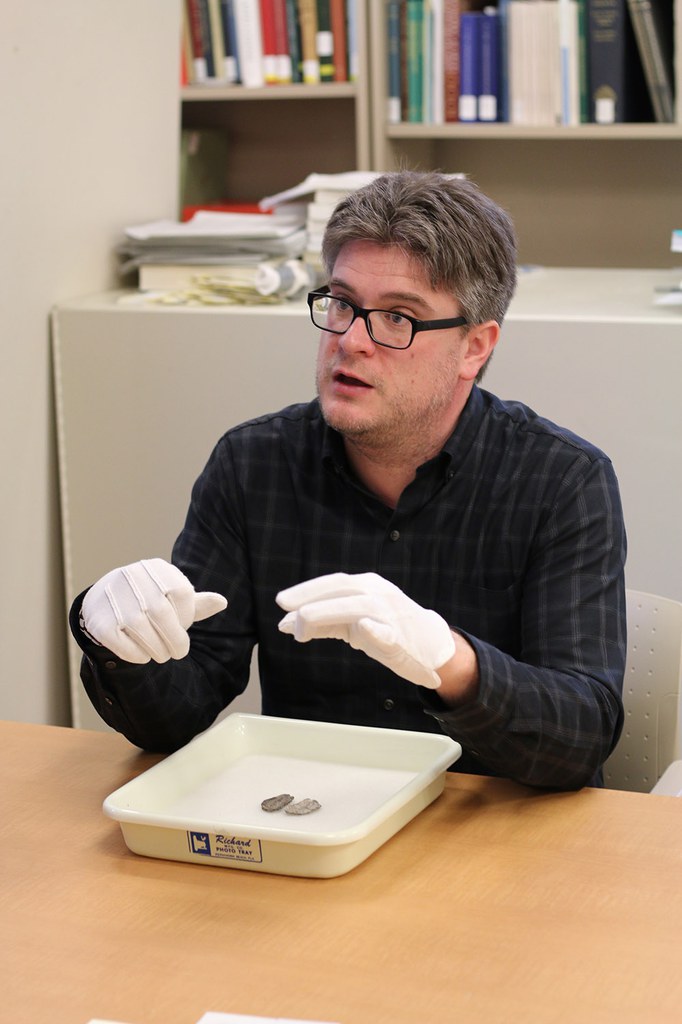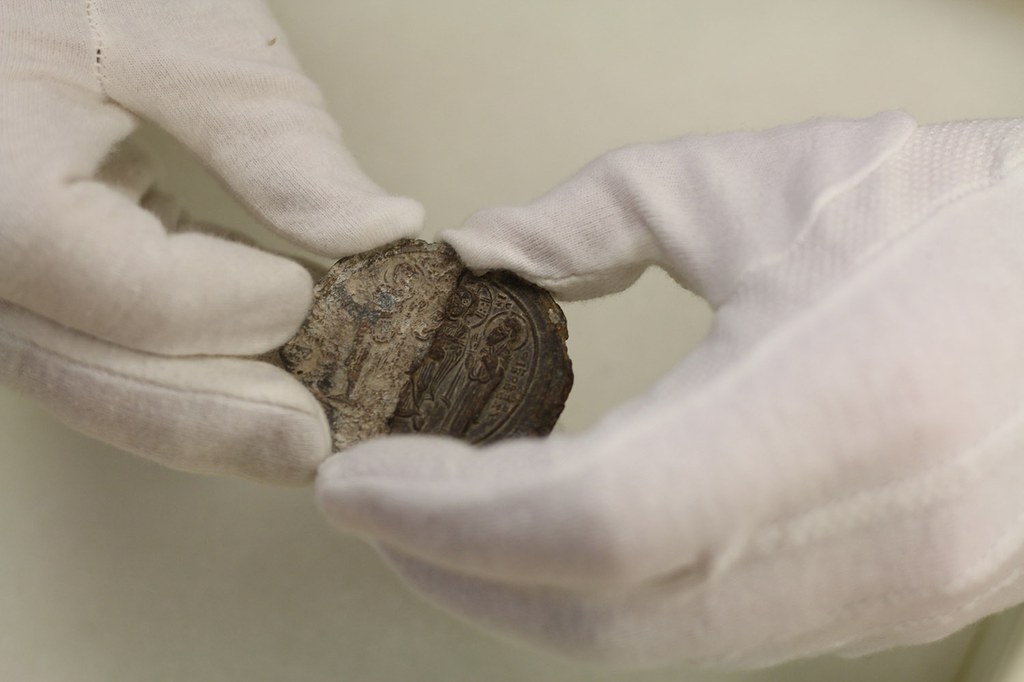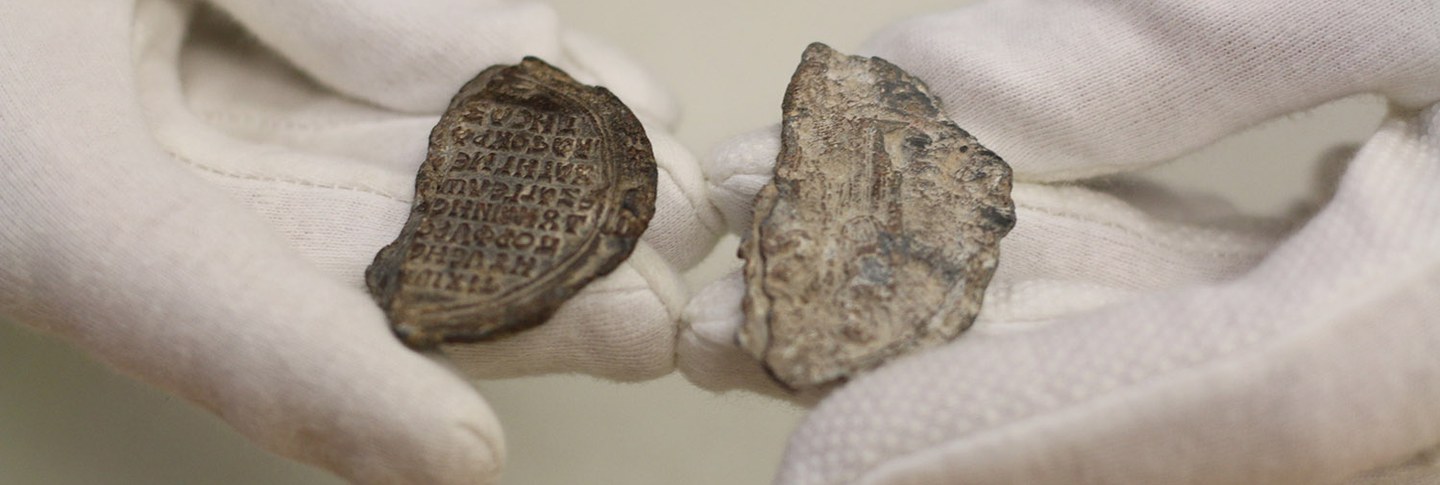For more than 60 years, it sat unidentified: a semicircle of lead engraved with part of Jesus Christ’s body and unfinished Greek poems. This Byzantine seal had broken in two, with one piece missing.
The half-seal tantalized with an unanswered question: to whom had it belonged?
Although the 17,000 seals in the Dumbarton Oaks collection include many halves, this particular half-seal is special. It comes from the late 12th or early 13th century, when seal production declined. The owner was likely a very important person connected with two imperial families, judging by the partial inscription and exquisite, expensive craftsmanship.
In the Byzantine world, metal seals identified owners and protected things. A seal might secure a string that kept a letter closed or prove an official inspector had verified your weights and measures. An influential person would commission a seal with specific wording and Christian imagery that conveyed social status.
“It’s sort of a business card mixed with a Jesus-fish bumper sticker,” says Jonathan Shea, assistant curator of coins and seals.
Shea first arrived at Dumbarton Oaks ten years ago, a student in the Byzantine Coins and Seals Summer Program. Today he spends his days digitizing and curating the world’s largest specialized assemblage of coins and seals, with the help of current Humanities Fellow Charles Webb. Shea is a museum curator, a researcher, a professor, an educator for underserved children, a conservator, a Byzantine coin expert, and a sigillographer—a scholar of seals. Add to that list one more role: detective.
Shea set about trying to solve the mystery of the half-seal. Every two years, he showed it to Coins and Seals Summer Program students and faculty, asking for their best guesses. He often hashed out ideas with sigillography consultant Eric McGeer and seal specialist-turned Dumbarton Oaks Digital Content Manager Lain Wilson.

For some time, Shea and his collaborators suspected the seal’s owner was a woman, based on the feminine ending of the family name. But with the owner’s first name lost on the missing other half, no one knew for sure. Working with seals, says Shea, “you’re working with people—or what’s left of people. And one person might not tell you much, but you put thousands of examples together, and you can start to understand a little bit more about the empire and the people who lived in it.”
Then one autumn day in 2017, Shea was browsing the handwritten information cards that accompany each seal, conducting research for his book on Byzantine bureaucracy. He spotted the card for the mysterious half-seal, number 537 of the Thomas Whittemore collection acquired in the 1950s. Some hours later, Shea noticed a card with sparse information describing half-seal number 2858 from the same collection.
“What are the chances?” he thought. Shea sent sigillographers around the world a Photoshopped image of both half-seals side by side. “Is this wishful thinking?” he asked. “Do you think we’ve found the other half?”

The words and images lined up perfectly. Other scholars confirmed: this was the missing half-seal.
But the mystery remained: who had owned the seal? The answer took a little more digging. Whereas half-seal 537 was well-preserved, half-seal 2858 was badly damaged—possibly crushed by the same heavy object that broke the seal in two. So Shea and his collaborators pieced together the inscription using clues like letter shape and Byzantine poetry’s strict syllable and accent rules.
After rigorous sleuthing, Shea thinks they may have found their man: John, an elite member of the imperial family with the rank of Sebastokrator. He was descended from the Angelos family through his father and the Doukas through his mother—hence the feminine styling of the family name, to indicate his ancestry on his mother’s side. “That this guy, John, chose to put parts of the Holy Family on his seal, and that he chose these specific words to present himself to the world, gives us a teeny tiny insight into him. It’s not a lot. But for most of the people with our seals, it’s all that they have left behind,” says Shea.
“That’s the thing I really like about seals,” he adds. “Each one is the record of a person. A thousand years after they’ve died, this is what’s left of them.”
Julia Ostmann is Postgraduate Writing and Reporting Fellow at Dumbarton Oaks. Photos by Elizabeth Muñoz Huber, Postgraduate Digital Media Fellow.

